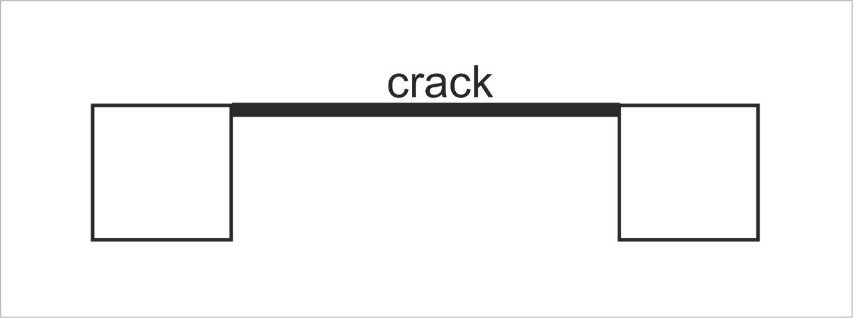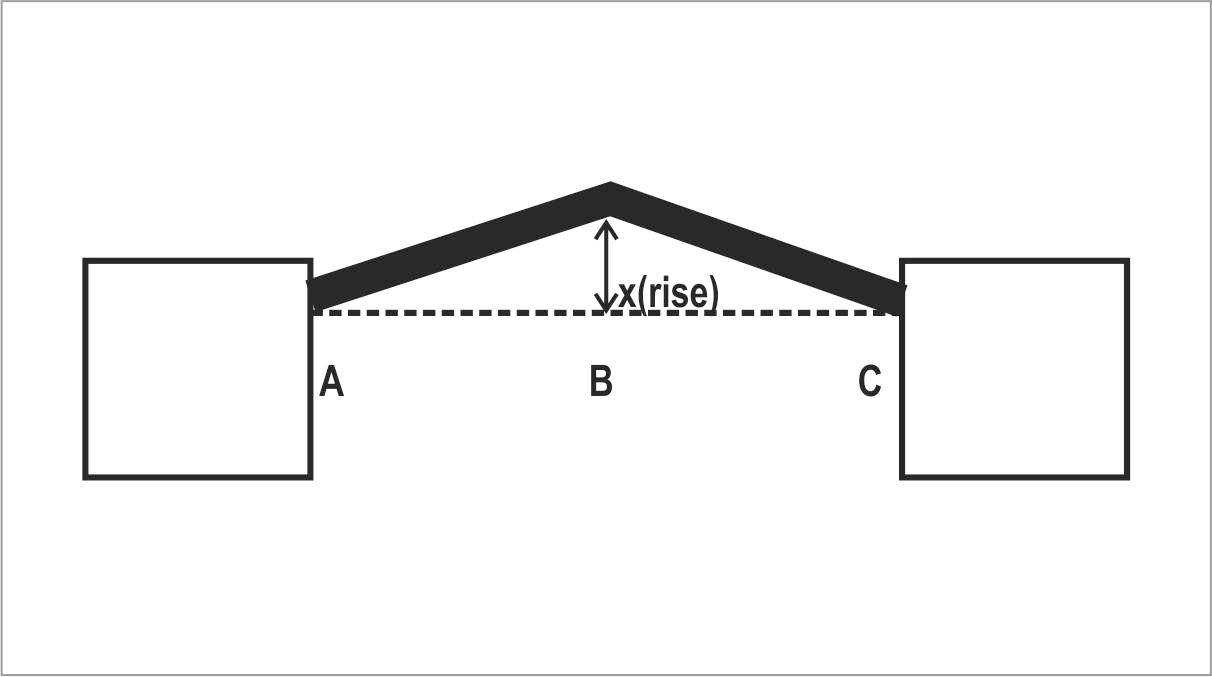Answer
36.6k+ views
Hint: In this question, the concept of the linear expansion will be used. The ratio of increment of length to the original length with the rise of \[1\] degree in temperature is called coefficient of linear expansion.
Complete step by step answer:
As we know that the linear expansion is that phenomenon in which the object expands due to certain reasons only in one direction. The ratio of increment of length to the original length with the rise of \[1\] degree in temperature is called coefficient of linear expansion. According to the question the diagram should look like this-

Here after the buckling phenomenon occurs the condition looks like the following,

From the above diagram it is clear that as buckling was even as the end supports were considered fixed in nature hence,
\[BC = \dfrac{{{L_0}}}{2}\]
\[ \Rightarrow BC = \dfrac{{3.77}}{2} = 1.885{\text{m}}\]
Now, using formula \[\Delta I = \dfrac{{{L_0}}}{2}\alpha \Delta T\] we get
\[ \Rightarrow \Delta I = 1.885 \times 25 \times {10^{ - 6}} \times 32\]
\[ \Rightarrow \Delta I = 1.508 \times {10^{ - 3}}{\text{m}}\]
Now, as we know that \[AB = \dfrac{{{L_0}}}{2} + \Delta I\]
\[ \Rightarrow AB = 1.885 + 1.508 \times {10^{ - 3}}\]
After simplification, we get
\[ \Rightarrow AB = 1.886508{\text{m}}\]
By using, Pythagoras’ theorem we get
\[{\text{A}}{{\text{B}}^2} = B{C^2} + {x^2}\]
Now, we substitute the values in the above expression as,
\[ \Rightarrow {\left( {1.886508} \right)^2} = {\left( {1.885} \right)^2} + {x^2}\]
Simplifying the above expression and obtain,
\[ \Rightarrow {x^2} = {\left( {1.886508} \right)^2} - {\left( {1.885} \right)^2} = 0.00568743406\]
After simplification we get,
\[\therefore x = 0.07541 \approx 7.5 \times {10^{ - 2}}\;{\text{m}}\]
Thus, the correct option is C.
Note: Buckling is a phenomenon which occurs when there is a sudden change in the shape, or we can say there is deformation of a body under load. Buckling can occur in elongated bodies such as columns as well as on 2D structures such as on plates. These linear expansions are not really visible to the naked eye during the process. Hence these standard mathematical formulae can be applied. Here we have also considered that the side walls are static, and no expansion has taken place through them. We should also remember that there is a difference between bending and buckling.
Complete step by step answer:
As we know that the linear expansion is that phenomenon in which the object expands due to certain reasons only in one direction. The ratio of increment of length to the original length with the rise of \[1\] degree in temperature is called coefficient of linear expansion. According to the question the diagram should look like this-

Here after the buckling phenomenon occurs the condition looks like the following,

From the above diagram it is clear that as buckling was even as the end supports were considered fixed in nature hence,
\[BC = \dfrac{{{L_0}}}{2}\]
\[ \Rightarrow BC = \dfrac{{3.77}}{2} = 1.885{\text{m}}\]
Now, using formula \[\Delta I = \dfrac{{{L_0}}}{2}\alpha \Delta T\] we get
\[ \Rightarrow \Delta I = 1.885 \times 25 \times {10^{ - 6}} \times 32\]
\[ \Rightarrow \Delta I = 1.508 \times {10^{ - 3}}{\text{m}}\]
Now, as we know that \[AB = \dfrac{{{L_0}}}{2} + \Delta I\]
\[ \Rightarrow AB = 1.885 + 1.508 \times {10^{ - 3}}\]
After simplification, we get
\[ \Rightarrow AB = 1.886508{\text{m}}\]
By using, Pythagoras’ theorem we get
\[{\text{A}}{{\text{B}}^2} = B{C^2} + {x^2}\]
Now, we substitute the values in the above expression as,
\[ \Rightarrow {\left( {1.886508} \right)^2} = {\left( {1.885} \right)^2} + {x^2}\]
Simplifying the above expression and obtain,
\[ \Rightarrow {x^2} = {\left( {1.886508} \right)^2} - {\left( {1.885} \right)^2} = 0.00568743406\]
After simplification we get,
\[\therefore x = 0.07541 \approx 7.5 \times {10^{ - 2}}\;{\text{m}}\]
Thus, the correct option is C.
Note: Buckling is a phenomenon which occurs when there is a sudden change in the shape, or we can say there is deformation of a body under load. Buckling can occur in elongated bodies such as columns as well as on 2D structures such as on plates. These linear expansions are not really visible to the naked eye during the process. Hence these standard mathematical formulae can be applied. Here we have also considered that the side walls are static, and no expansion has taken place through them. We should also remember that there is a difference between bending and buckling.
Recently Updated Pages
To get a maximum current in an external resistance class 1 physics JEE_Main

f a body travels with constant acceleration which of class 1 physics JEE_Main

A hollow sphere of mass M and radius R is rotating class 1 physics JEE_Main

If the beams of electrons and protons move parallel class 1 physics JEE_Main

Two radioactive nuclei P and Q in a given sample decay class 1 physics JEE_Main

If a wire of resistance R is stretched to double of class 12 physics JEE_Main

Other Pages
The nitride ion in lithium nitride is composed of A class 11 chemistry JEE_Main

The mole fraction of the solute in a 1 molal aqueous class 11 chemistry JEE_Main

An electric bulb has a power of 500W Express it in class 11 physics JEE_Main

Normality of 03 M phosphorus acid H3PO3 is A 05 B 06 class 11 chemistry JEE_Main

A closed organ pipe and an open organ pipe are tuned class 11 physics JEE_Main

For an electromagnet the core should have A High retentivity class 12 physics JEE_Main



